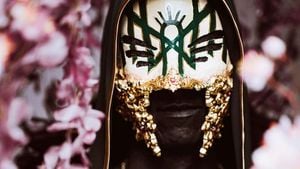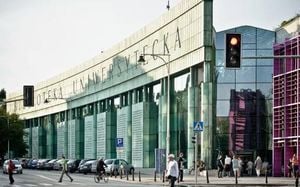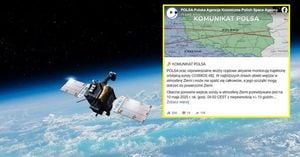As the sun sets over Vatican City, the world holds its breath in anticipation of a new chapter in the Catholic Church's history. Today, 133 cardinal electors are gathered in the Sistine Chapel, engaged in the solemn task of selecting a successor to Pope Francis, who passed away on April 21, 2025, coinciding with his 60th birthday. The Conclave, which began on May 8, has already seen its first day conclude with a black smoke signal, indicating that no candidate achieved the necessary two-thirds majority during the initial vote.
On the morning of May 9, the second day of voting commenced with another black smoke signal emerging at 11:51 AM, following the first black signal from the previous evening at 9 PM. The atmosphere in St. Peter's Square is electric, with over 45,000 faithful gathered, their eyes fixed on the chimney of the Sistine Chapel, hoping for the sight of white smoke that would signal the election of a new Pope.
The Conclave's schedule allows for up to four votes per day, with two votes scheduled for the morning and two for the afternoon. Should no agreement be reached after the first three votes, the anticipation for the white smoke could extend until around 7 PM, when the final vote of the day is expected to conclude.
Among the potential candidates, often referred to as “papabili,” several names have emerged as frontrunners. Cardinal Pietro Parolin, the 70-year-old Secretary of State, is widely regarded as a favorite due to his extensive experience in Vatican diplomacy and his ability to navigate complex international relations. His role in the Vatican's agreement with China regarding bishops underscores his diplomatic prowess and makes him a strong contender for continuity in leadership.
Another significant name is Cardinal Matteo Zuppi, the 69-year-old Archbishop of Bologna and president of the Italian Bishops’ Conference. Known for his pastoral approach and commitment to social justice, Zuppi has garnered respect for his efforts in interreligious dialogue and peace initiatives. His ability to resonate with both progressive and traditional factions within the Church positions him as a unifying figure.
Cardinal Pierbattista Pizzaballa, the 60-year-old Latin Patriarch of Jerusalem, is also among the leading candidates. Having lived in Jerusalem since 1990, Pizzaballa's deep understanding of the region's complexities, particularly in the Israeli-Palestinian conflict, has shaped his leadership style. His recent actions, including offering himself as a hostage in exchange for the release of Israeli children held in Gaza, have highlighted his courage and commitment to peace. Pizzaballa's management skills, particularly in financial matters, further bolster his candidacy, as he seeks to bridge the gap between differing theological perspectives within the Church.
Internationally, Cardinal Luis Antonio Tagle from the Philippines, aged 67, is often referred to as the “Asian Francis” for his warm and approachable demeanor. As the Prefect of the Dicastery for Evangelization, Tagle embodies the vibrant spirit of the Church in Asia and is seen as a voice for the global Church.
Other notable candidates include Cardinal Robert Francis Prevost from the USA, who combines pastoral sensitivity with administrative experience, and Cardinal Jean-Marc Aveline from France, known for his commitment to interreligious dialogue. Cardinal Robert Sarah, the 79-year-old Prefect Emeritus of Divine Worship, represents the more traditionalist wing of the Church and is respected for his theological depth.
As the cardinal electors continue their deliberations, the stakes are high. The next Pope will not only inherit the responsibilities of spiritual leadership for over a billion Catholics but will also face pressing global challenges, including wars, ecological crises, and increasing social inequalities. The outcome of this Conclave could significantly shape the Church's direction in addressing these issues.
The atmosphere outside the Vatican is one of hope and expectation. Many are reflecting on the legacy of Pope Francis, whose tenure emphasized mercy, inclusivity, and social justice. The new Pope will be expected to continue this mission while navigating the internal divisions that exist within the Church.
As the day progresses, the faithful await the next smoke signal, hoping for a sign of hope and renewal. The world watches closely, knowing that the decision made within the walls of the Sistine Chapel will have far-reaching implications for the Catholic Church and its role in a rapidly changing world.
The Conclave's proceedings are shrouded in mystery, with strict protocols in place. All telecommunication signals within Vatican City have been deactivated, ensuring the secrecy of the discussions among the cardinal electors. If the electors struggle to reach a consensus, they may take a pause for prayer and reflection after three days without a decision.
With bookmakers suggesting a preference for continuity, many are placing bets on names like “Francesco II” emerging as the new Pope, reflecting the desire for a leader who will carry forward the vision of Pope Francis. As the clock ticks toward the evening, the anticipation builds, and the faithful remain united in their prayers, hoping for a shepherd who will guide them through the challenges ahead.
In a world filled with uncertainty, the election of a new Pope offers a glimmer of hope for many. Whether it is a figure of continuity or change, the new leader will be tasked with addressing the spiritual and social needs of a diverse global congregation. The waiting game continues, as the faithful and the world look to the heavens, awaiting the moment when the smoke will rise, signaling the dawn of a new papacy.
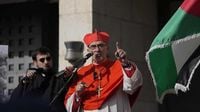
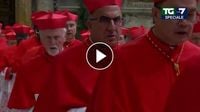
![Conclave, secondo giorno di votazioni: oggi 4 scrutini [I PAPABILI]](https://thumbor.evrimagaci.org/3zWPddbOz6Pw9MSi6IKIFKZgjWU=/200x0/tpg%2Fsources%2F8c97ef1c-1f08-4c8d-8f9a-8c79a9059a08.jpeg)
